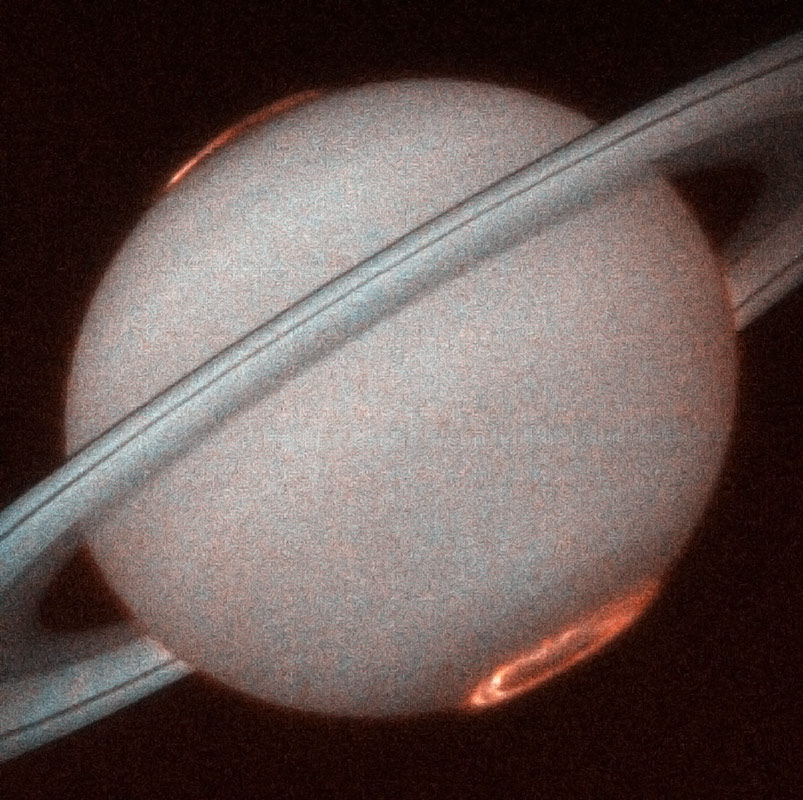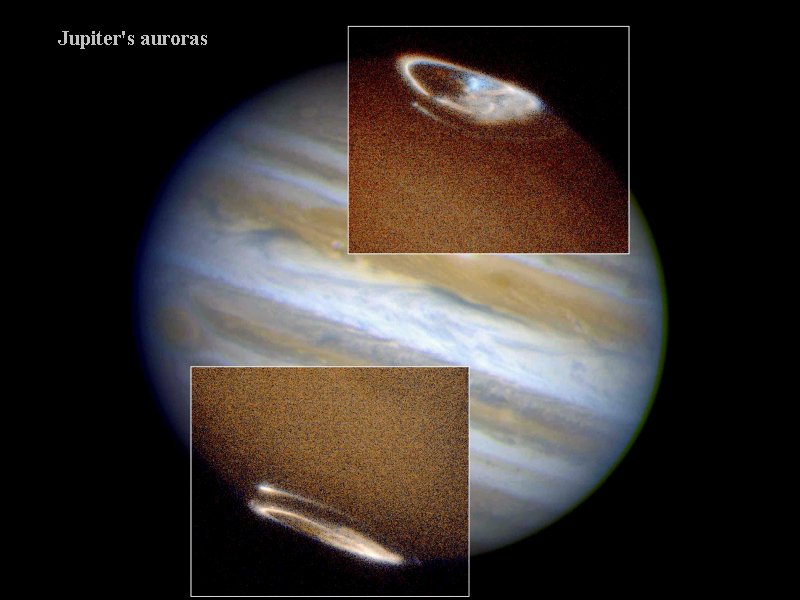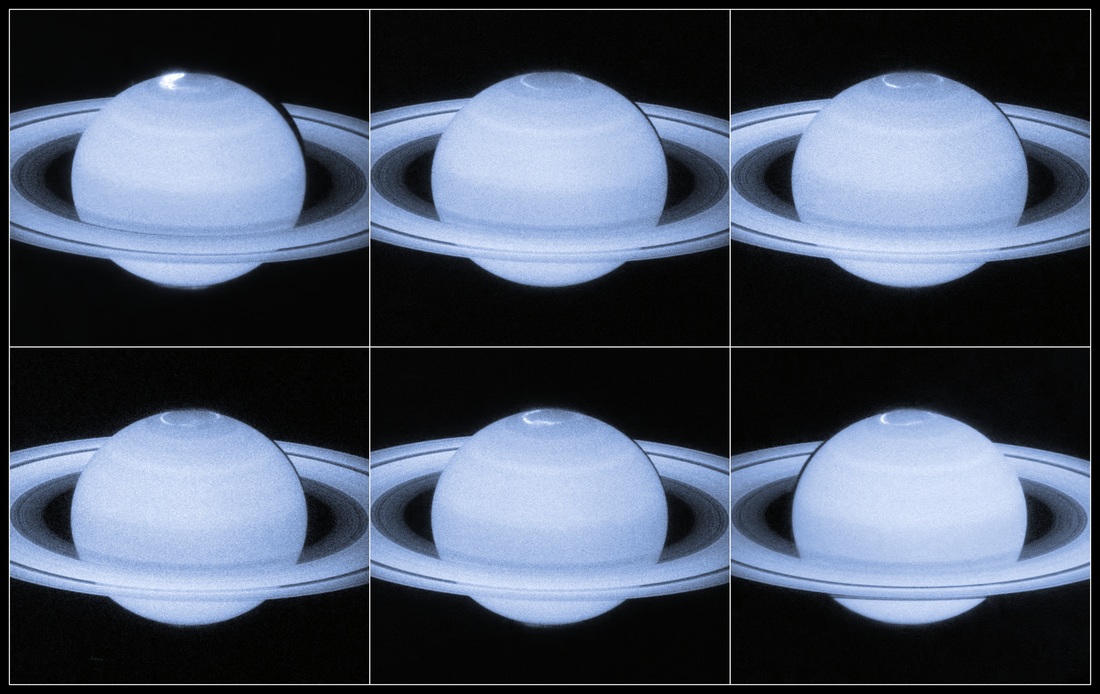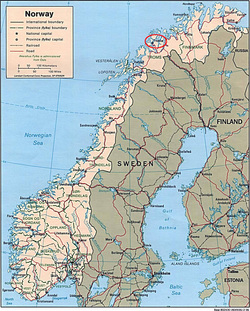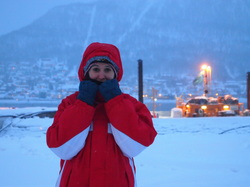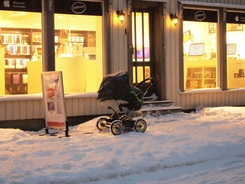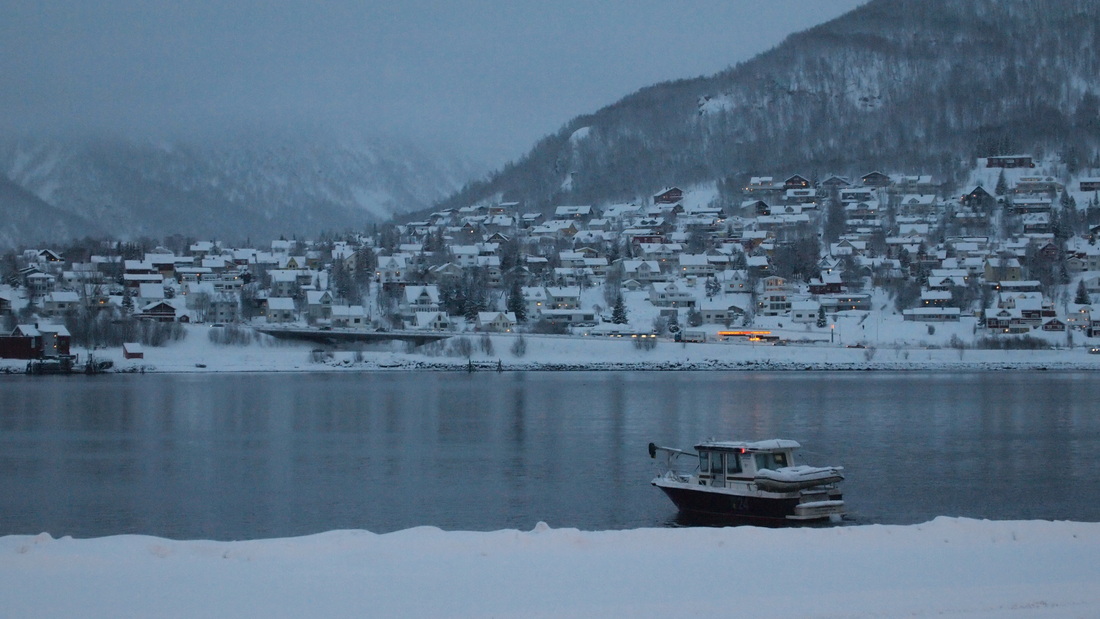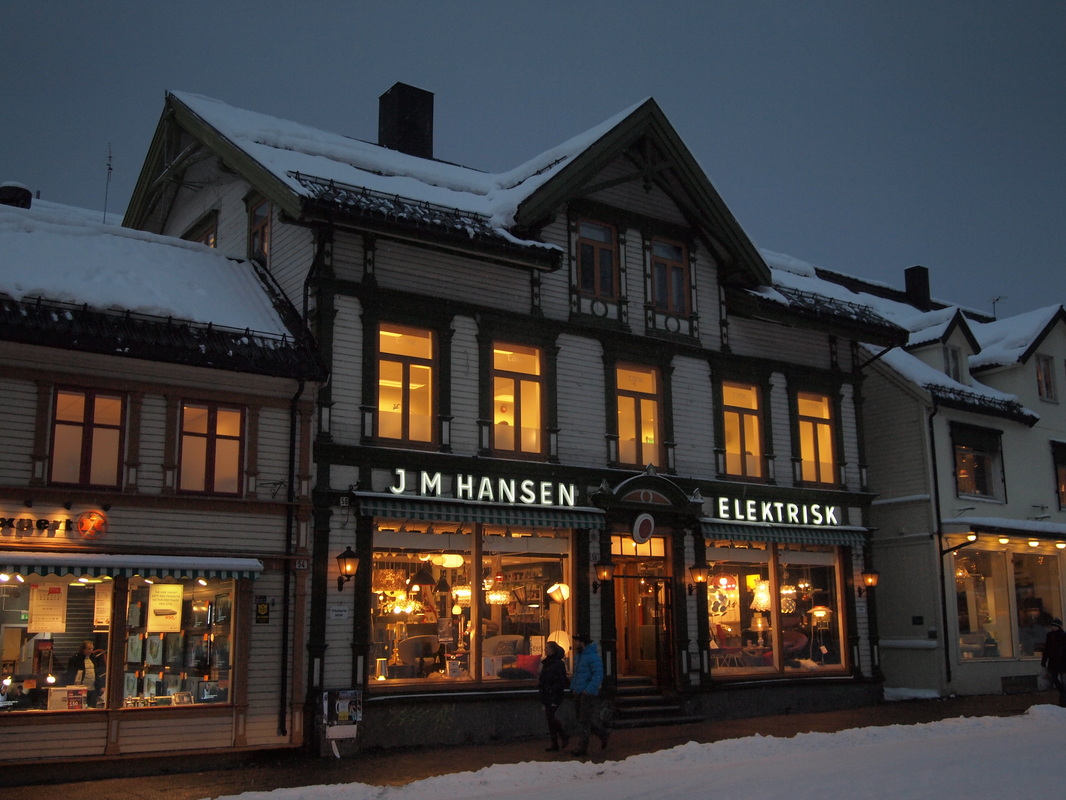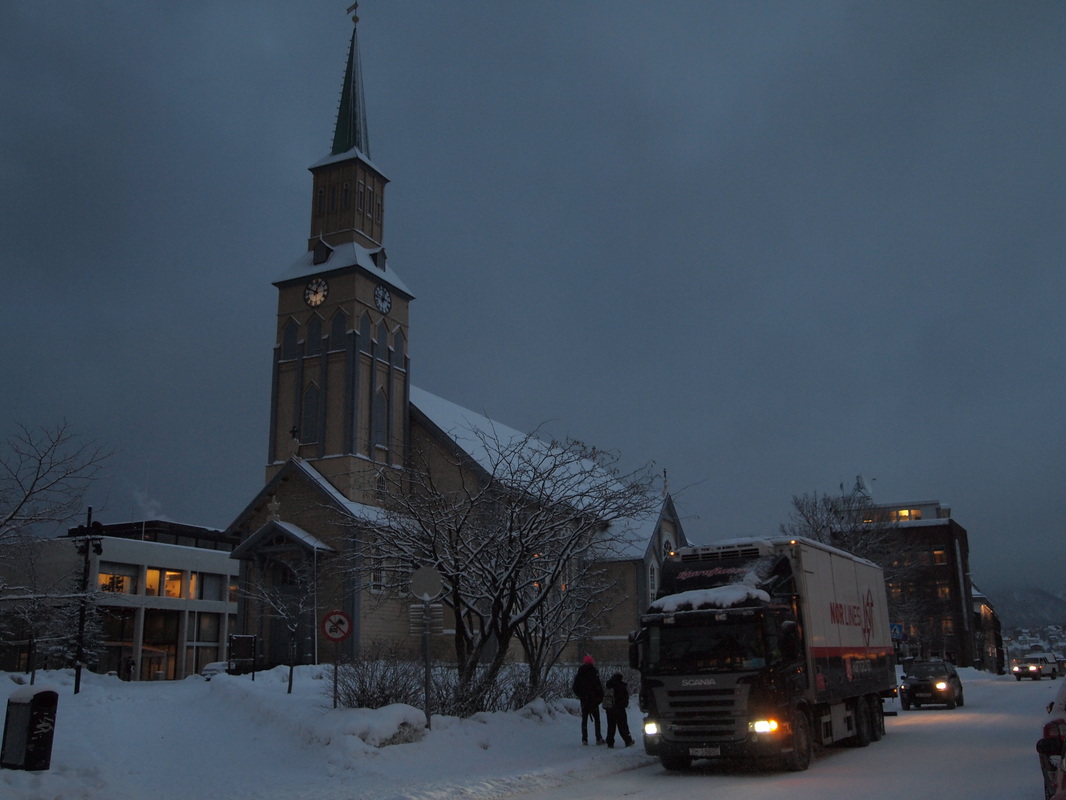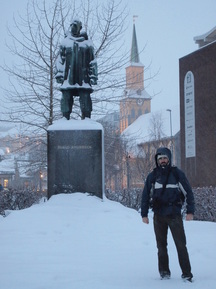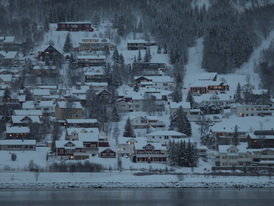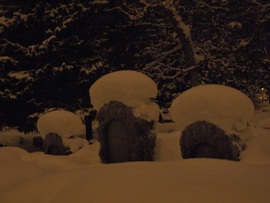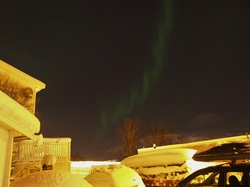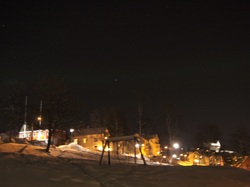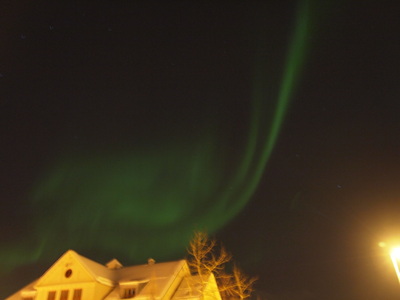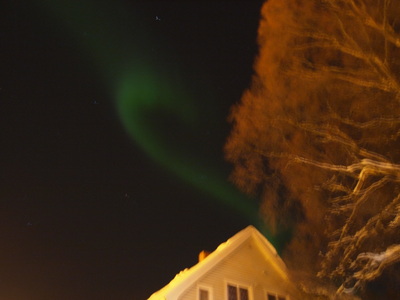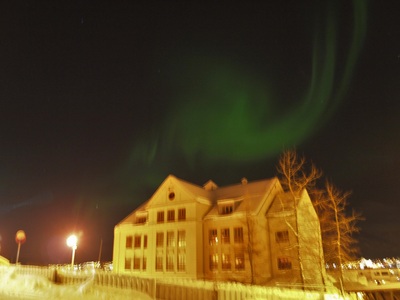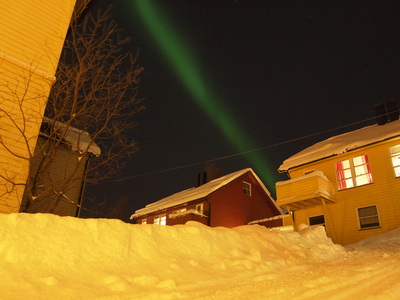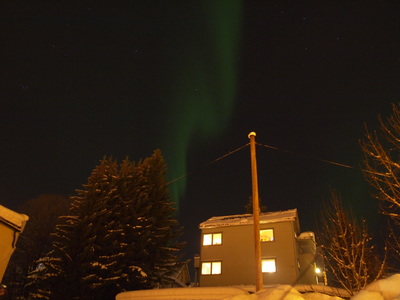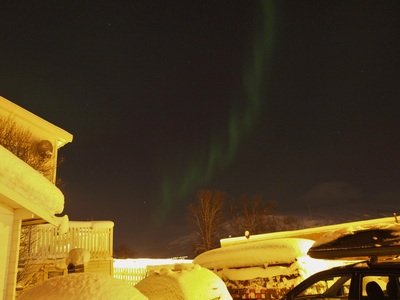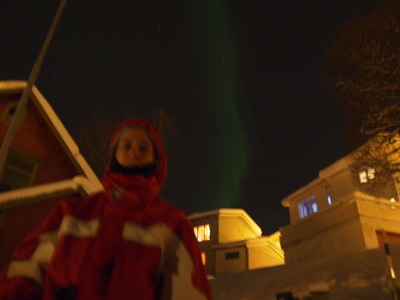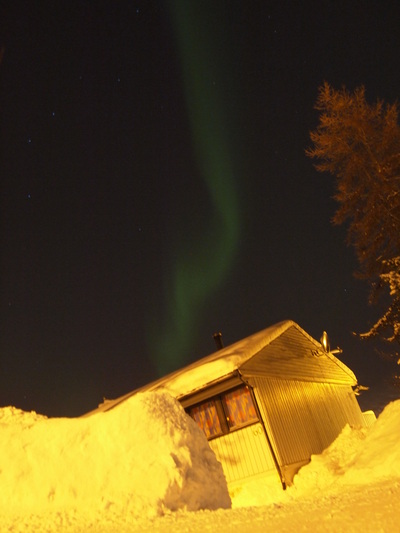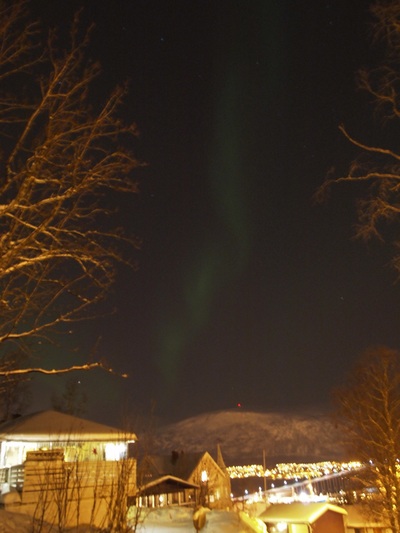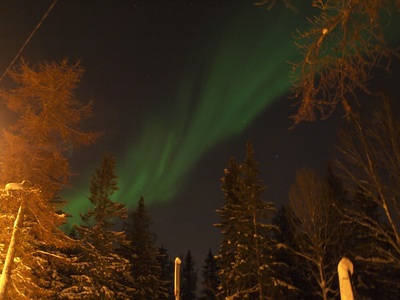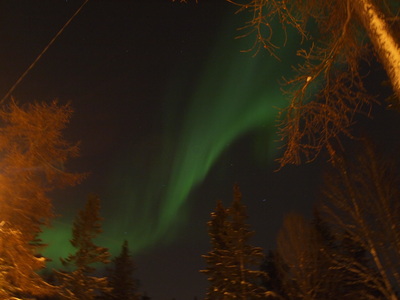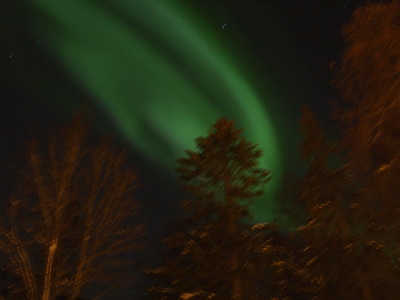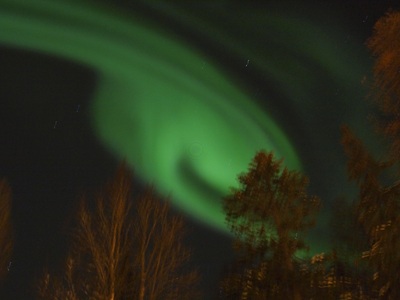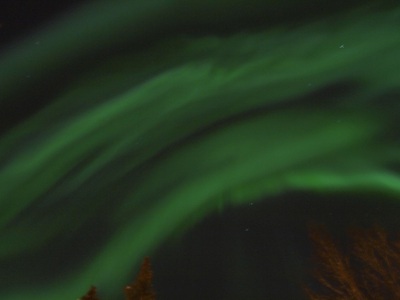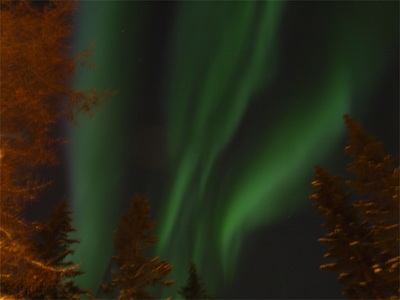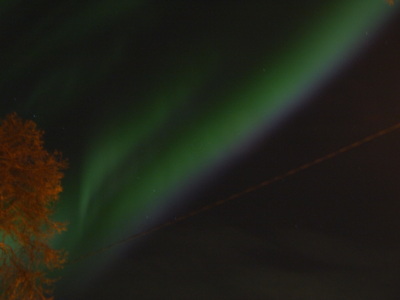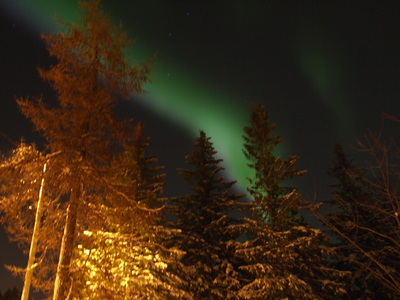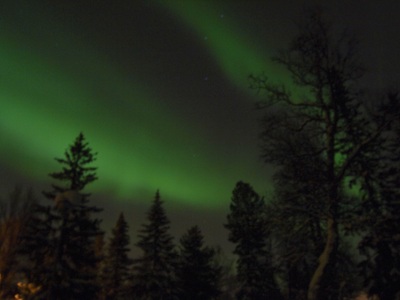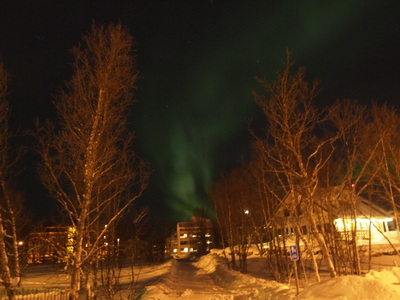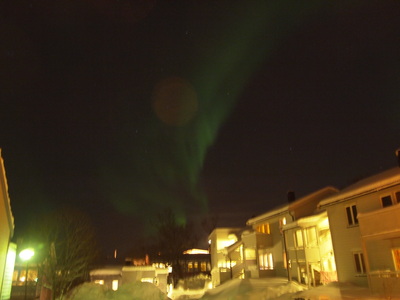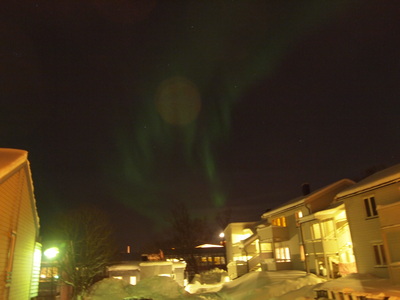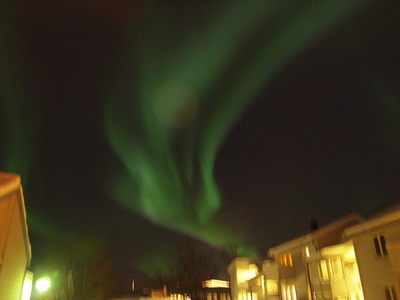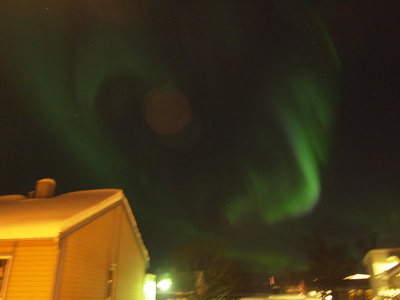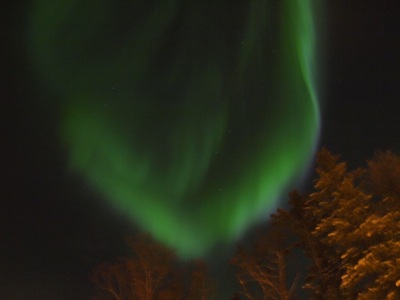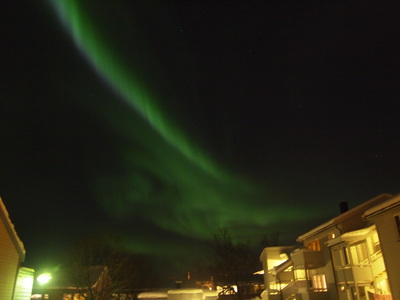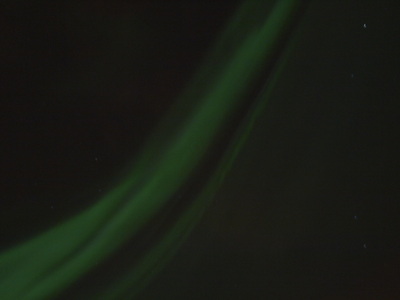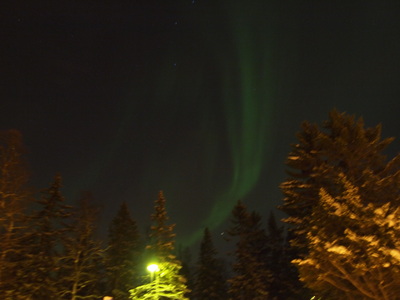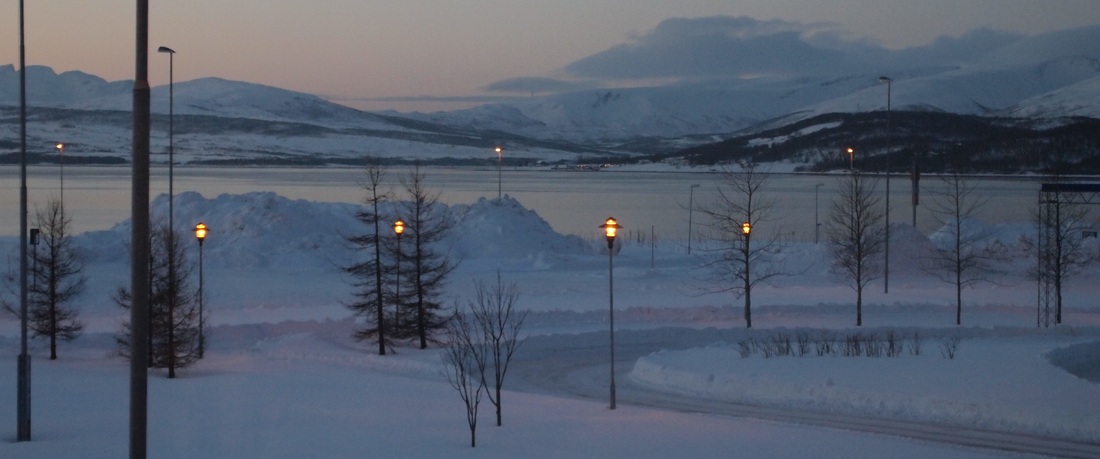Low budget auroras in TromsøThe aurora* is the most impressive sight of our skies, with the only rival of total solar eclipses. They are the result of the interaction between charged particles coming from the Sun and our atmosphere. Instead of trying to explain this with my own, boring words, I recommend this wonderful video from the University of Oslo.
*Known as aurora borealis in the northern hemisphere and aurora australis in the southern hemisphere.
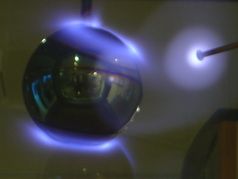 Auroras in a terrella Auroras in a terrella
This explanation was first introduced by Kristian Birkeland, who reproduced auroras in his lab using a magnetized sphere called terrella.
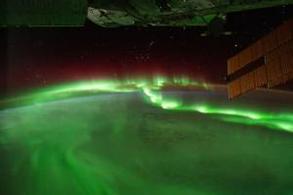 Video of auroras from the ISS. Video of auroras from the ISS.
You may have noticed that auroras come in colours. This is because the charged particles can interact with our atmosphere at different heights, mainly with oxygen (red/green) and nitrogen (red/blue). Different combinations also result in yellow or pink auroras, but green is by far the most common. You can read more about this in the Wikipedia article.
It is also worth noting that auroras are not exclusive to Earth. As terrellas demonstrate, they will occur in any sphere with an atmosphere and a magnetic field which encounters charged ions. However, we may need to look in ultraviolet (like in the examples below) or other light frequencies to find them.
So now you have an idea of what auroras are. What about going to see some?
|
|
|

